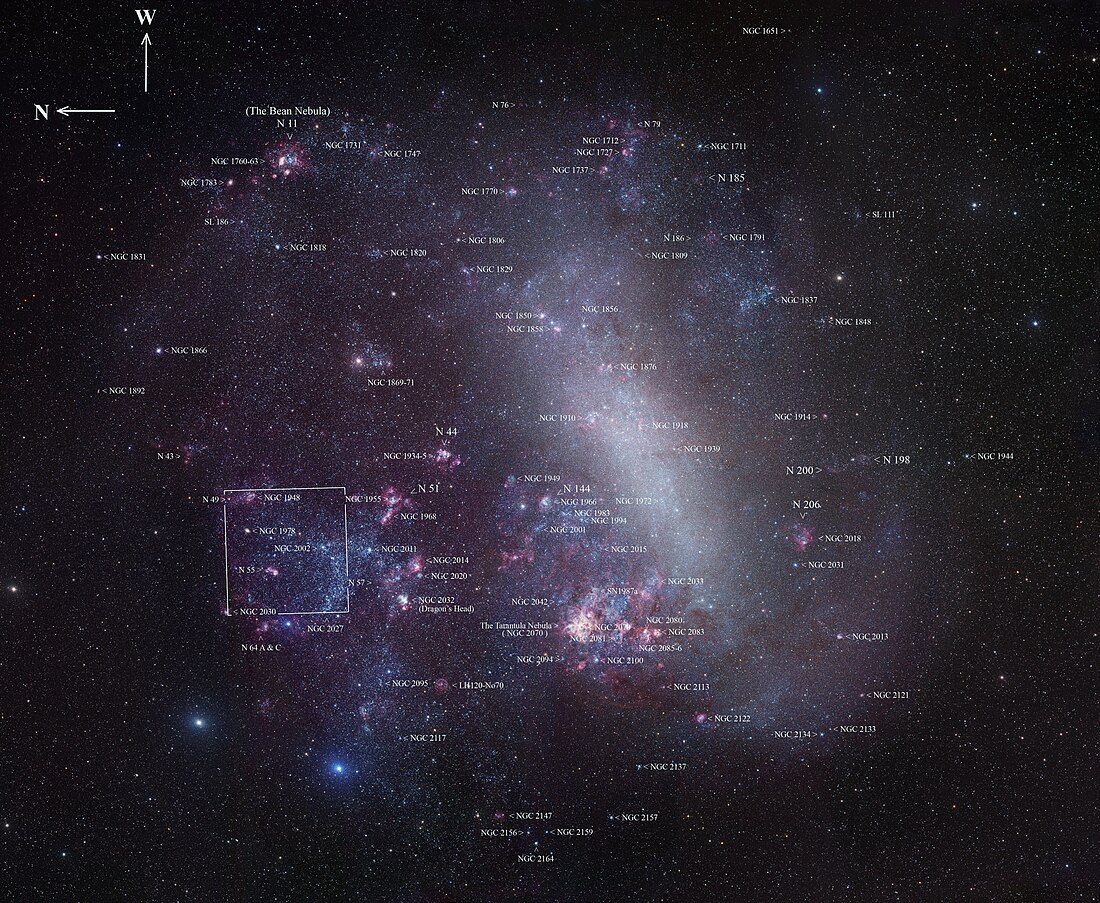Top Qs
Timeline
Chat
Perspective
LMC X-4
X-ray binaries in the Large Magellanic Cloud From Wikipedia, the free encyclopedia
Remove ads
LMC X-4 is an eclipsing high-mass X-ray binary (HMXB) pulsar system located in the Large Magellanic Cloud (LMC), a satellite galaxy of the Milky Way approximately 163,000 light-years away. Discovered in 1972 by the Uhuru X-ray observatory, it consists of a neutron star and a massive companion star, exhibiting periodic X-ray eclipses and long-term intensity variations.[3][4]
Remove ads
Charecterstics
Summarize
Perspective
Components
LMC X-4 comprises a neutron star with a spin period of 13.5 seconds and an estimated mass of approximately 1.4 solar masses, though earlier studies suggested a range of 2–4 solar masses. The companion is an O7 III-V (or O8 III) star with a mass of about 25 solar masses, nearly filling its Roche lobe, and a visual magnitude of ~14.0. The system's high X-ray luminosity is likely powered by a combination of stellar wind accretion and possible Roche-lobe overflow.[2][5][6]
Orbital Parameters
The binary system has an orbital period of 1.40830 ± 0.0005 days and exhibits a super-orbital period of approximately 30.5 days, attributed to accretion disc precession. Long-term observations indicate orbital decay with a period derivative on a timescale of ~0.8 million years and evidence of a second derivative on a 55-year timescale, derived from data spanning over 4,600 orbits.[7][8][9]
X-ray Emission
The X-ray emission of LMC X-4 is characterized by a power-law spectrum with a photon index of 0.7–1.0, a high-energy cutoff, and an iron emission line. The iron line's equivalent width varies significantly during low-intensity states but remains stable in high states, showing similarities to the HMXB Her X-1, though without the variable absorption column density. The system displays X-ray flares and quasi-periodic oscillations (QPOs) at frequencies around 74 mHz and 20–30 mHz, detected by XMM-Newton. Periodic X-ray eclipses have been instrumental in refining orbital parameters.[10][11][12]
Remove ads
Evolution
Recent simulations suggest that LMC X-4 may evolve into a Thorne–Żytkow object, a theoretical star with a neutron star core enveloped by a massive stellar companion, potentially linked to ultra-long gamma-ray bursts. Its study provides insights into accretion processes, orbital dynamics, and the evolution of massive binary systems.[13]
References
Wikiwand - on
Seamless Wikipedia browsing. On steroids.
Remove ads

